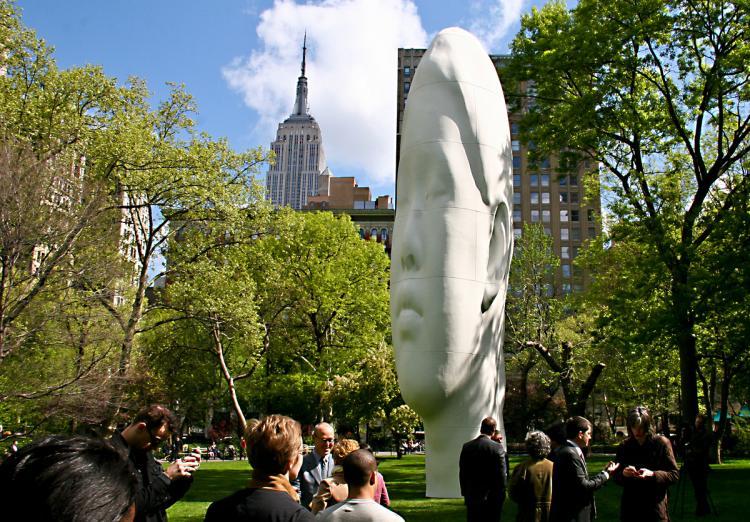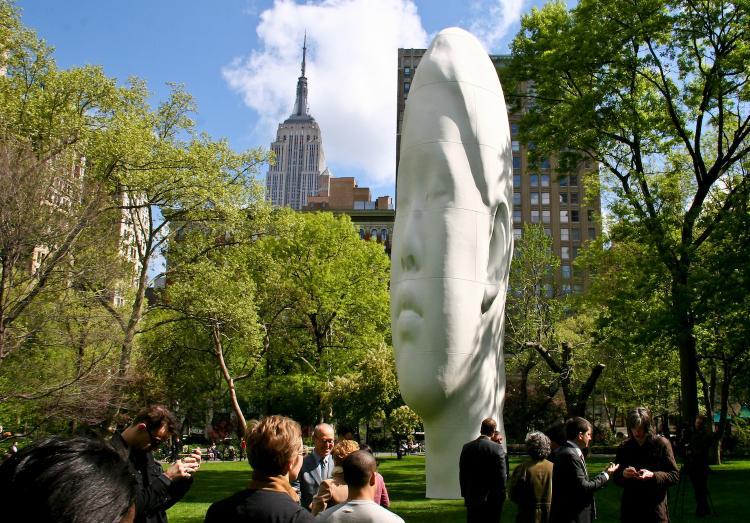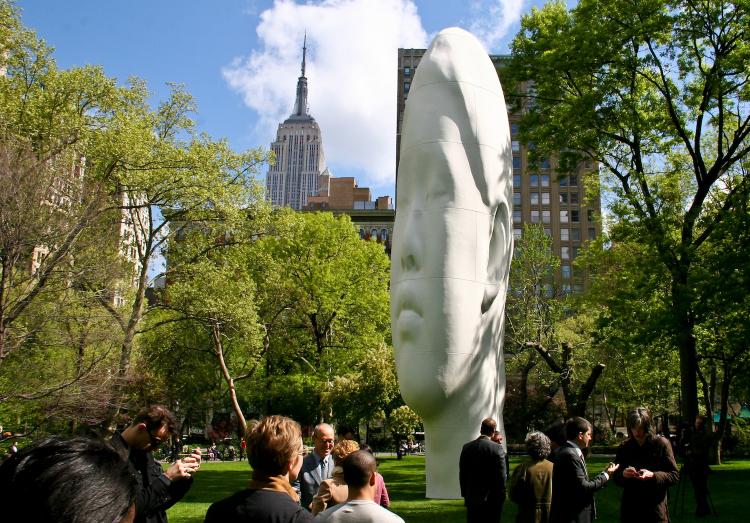A New Face Greets Madison Square Park
A new face greeted Madison Square Park in Lower Manhattan on in the form of a 44-foot-tall sculpture. Jaume Plensa, an internationally renowned artist, created the white sculpture as a public monument.

PUBLIC ART UNVEILED: 'Echo,' the 44-foot-high fiberglass-reinforced plastic sculpture by internationally renowned artist Jaume Plensa, is officially unveiled at Madison Square Park on Thursday. Zack Steiber/The Epoch Times

Zachary Stieber
Senior Reporter
|Updated:
Zachary Stieber is a senior reporter for The Epoch Times based in Maryland. He covers U.S. and world news. Contact Zachary at [email protected]
Author’s Selected Articles






